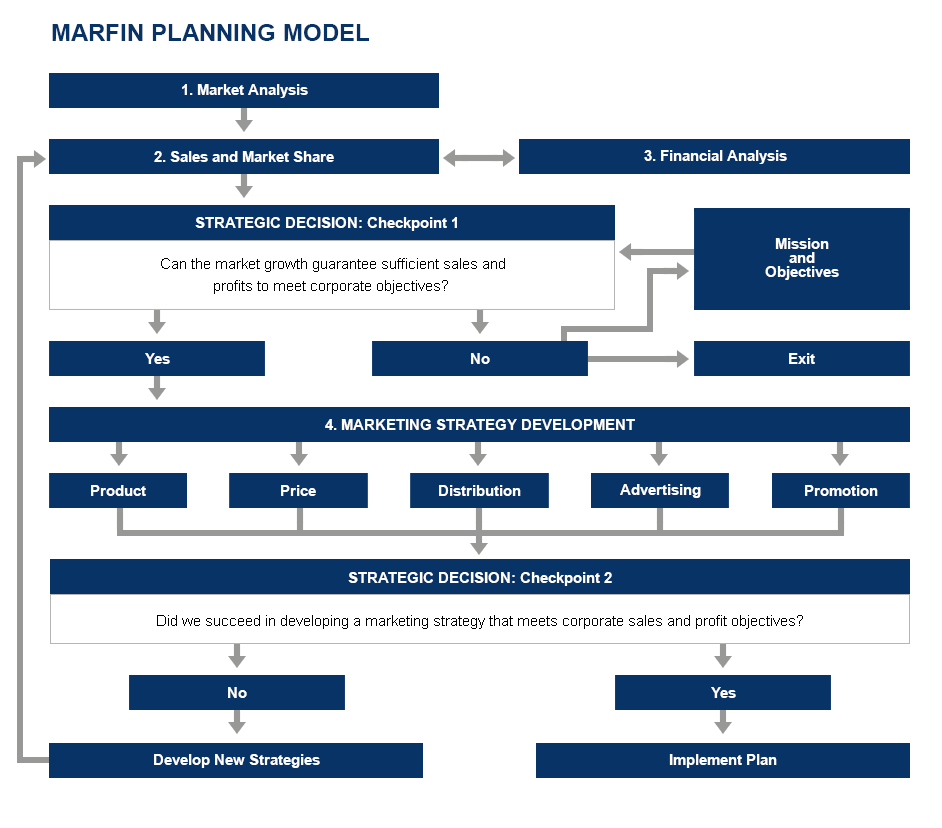MARFIN introduces the concept of the Fifth P
Modern marketing is based on the Four P classification that was formulated by J. E. McCarthy in the 1960s. The four Ps stand for: Product, Price, Place and Promotion. In 1990 Robert Lauterborn renamed the 4Ps to 4Cs. He replaced the product with customer needs, price with cost, place with convenience, and promotion with communication. Today, some marketeers even speak of 4Es (experience, everyplace, evangelism, exchange) emphasizing customer experience, and the 4Vs (validity, value, venue, vogue) concentrating on customer value.
Despite all the new trends, the good old 4P is still the term that is used most widely. Actually, the letters are irrelevant. It’s the understanding of the concept that each P represents that’s important. If we define each P properly and widely enough, then all the dimensions that the new letters claim to introduce are already included.
The 4Ps are the core elements of the marketing mix. They are the tools that marketers have at their disposal to design a winning strategy. Their role is very similar to the role of the four suits in card games. Whether you win or lose will depend on how you define and mix and use the four Ps.
But what is a winning strategy? It’s a strategy that enables a company to achieve its sales and share targets. The fifth P is the profit, the financial reward, that a successful marketing campaign has to realize.
The fifth P differs in character from the four Ps. While the four Ps are the tools that the planner can mix in different ways with the aim of achieving a certain goal, the fifth P is the result of the campaign. It shows the success or failure of the applied combination of the marketing mix.
The MARFIN marketing management system strongly believes that the fifth P, the potential financial gain of a marketing campaign, should play an essential role when developing a marketing strategy. Marketing campaigns should not be developed in a vacuum. They are a critical part of the overall corporate strategy. Understanding this correlation will be crucial when negotiating the size of the marketing budget.
The MARFIN name (a combination of the words marketing and financial) itself was created to emphasize this correlation. The MARFIN is based on the assumption that each set of marketing mix will result in a different profit level…. the key to find the right harmony between the profit expectation of management and the targeted sales and share growths of the marketing manager.
Generally, it is top management that sets the profit targets. The major question the marketing plan must answer is whether sales and profit projections meet those targets. The financial goal of a campaign is not necessarily a positive value. See the Loss Leader concept. Nevertheless, each campaign has to deliver an expected value, even if such value is a negative one.
For this purpose, MARFIN suggests two checkpoints during the planning process: the first, after the market forecast has been prepared, sales objectives have been set, and profit defined under current expenditure pattern; the second, after the marketing strategy has been developed and profit redefined.
If our sales and profit projections meet corporate objectives, then the planner may start to develop the marketing strategy. The marketing strategy is a function of the sales and brand share objectives. Each sales objective requires a different marketing strategy, and each marketing strategy will produce different financial results. Thus, we again have to check the profit picture after the marketing strategy has been developed.
Attention! Each sales objective requires a different marketing strategy, and each marketing strategy has different cost consequences. If we change one, we must also change the other.
The user will analyze several sets of objectives and the applicable marketing strategies before deciding which scenario looks the most realistic and develop a final strategy. MARFIN's real advantage is that it makes these calculations possible in seconds. In addition, the planner can also check on the consistency of each strategic step.
See the MARFIN MODEL below.
